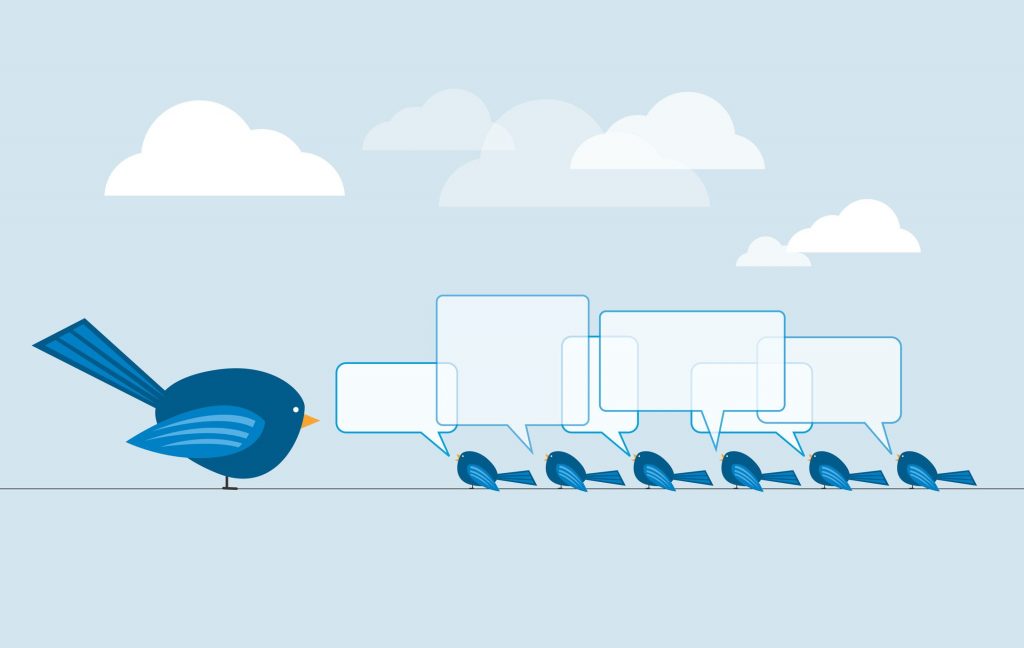When it comes to social media and your career, LinkedIn might be what first comes to mind. But Twitter can also be a valuable platform to drive success by building your personal brand.
The Twitter landscape, however, can be a bit more confusing than LinkedIn where professionalism reigns supreme. Being a far more casual environment, the potential for Twitter to lead to trouble as much as benefit is all too real. So let’s consider how to use this platform to your advantage and to help you build a presence in the broader health IT community.
The Look of Your Profile
Just like any social media profile, your Twitter needs to start with the right imagery. If you’re using this platform to fuel your work, it should look like it. Use a professional photo in which you are recognizable and alone. No pets or kids should be in the photo with you. You’ll want to be well-dressed in the photo and looking straight at the camera. If you don’t have a photo like this, start working on one and pick something clear as a placeholder. If nothing else, you do need some kind of photo as accounts without a picture are often suspected of being bots by other users.
You’ll also want to take advantage of the cover photo space on your profile. This photo should share more about you and what you do. It can be reflective of your passions and hobbies, but make sure that it will be seen positively by someone looking at you from a professional perspective. If you need help sizing or creating an image for this, try using Canva’s free library of tools to help you.
Name, Handle, Bio
Twitter can be a lot of fun. With a personal profile, you have complete freedom to using cheeky nicknames and a clever handle. But with a professional profile, you’ll want to keep it simple. Use your real name in both your username and handle and, if applicable, include your credentials. If your name is not available, use underscores, credentials and middle initials to differentiate yourself.
When it comes to your bio, this is a good opportunity to capture a reader’s attention, but you’ll still want to use some keywords that will help you stand out to search engines or help a recruiter search for someone like you.
Your bio is also an important area that can help define you. Use the correct city and state for recruiters searching for bio keywords that include geographic terms. Using links in your Twitter bio may sound like a good idea, but be sure not to overdo it. Just one link is all you need and a good one to choose would be the one that leads to your LinkedIn profile.
Content
While Twitter may have expanded its post character count to 280 characters, you’ll still want to be efficient with your words and not overcomplicate your posts. In fact, you’ll want to leave room to include links, hashtags and maybe even an emoji. You’ll also want to tag other users when appropriate and when you can, including photos, videos or Livestreams is always a good idea.
Retweeting other people’s content shares more about you without you having to create anything. It also shows a higher level of engagement with other people’s content and desire to share knowledge. If you retweet something, add commentary only when necessary. It’s okay to let the original tweet do all the talking sometimes. Your followers will still know that you were the source of the information.
When it comes to you being a source of information, there is no better way to gain trust than to emphasize your own credibility. Thought leadership content of your own is a great way to do this. You can create this through a personal blog, by publishing on LinkedIn, livestreaming from events, providing insightful comments, participating in tweet chats and attending conferences.
Your Network
Building a network is the key to Twitter relevancy. To do this, you’ll want to follow a few basic rules.
✔️ Listen first
✔️ If you have something to contribute to existing conversations, do
✔️ Talk & share thoughts/news/articles on topics you are passionate about
✔️ Find great communities & support them e.g. #pinksocks #HCLDR #HITsm
✔️ Follow people
✔️ Use hashtags
✔️ RT & engage— Irma Rastegayeva ✨ in #Boston (@IrmaRaste) March 8, 2019
The ability to collect followers of your profile is a question of value. What value you will provide them and will they gain a follower back? Don’t be afraid to follow influencers and people who follow you. In addition, you’ll want to:
- Comment, like and retweet tweets from people and organizations that you trust and want to promote or that you are trying to get attention from
- Tag people in tweets that include content you know is relevant to them
- Post at least one tweet per day with content you believe your audience will find valuable
Follow these basic principles and you’ll be on your way to building a brand for yourself on Twitter. The only thing left to do is commit to consistently maintaining your profile. Twitter is about consistency of activity. Audiences will disengage or unfollow during prolonged periods of inactivity, and you may find it difficult to get people’s attention if you are not consistent. In the end, no matter how far you might stray from these principles, at least make sure you commit to being active.



